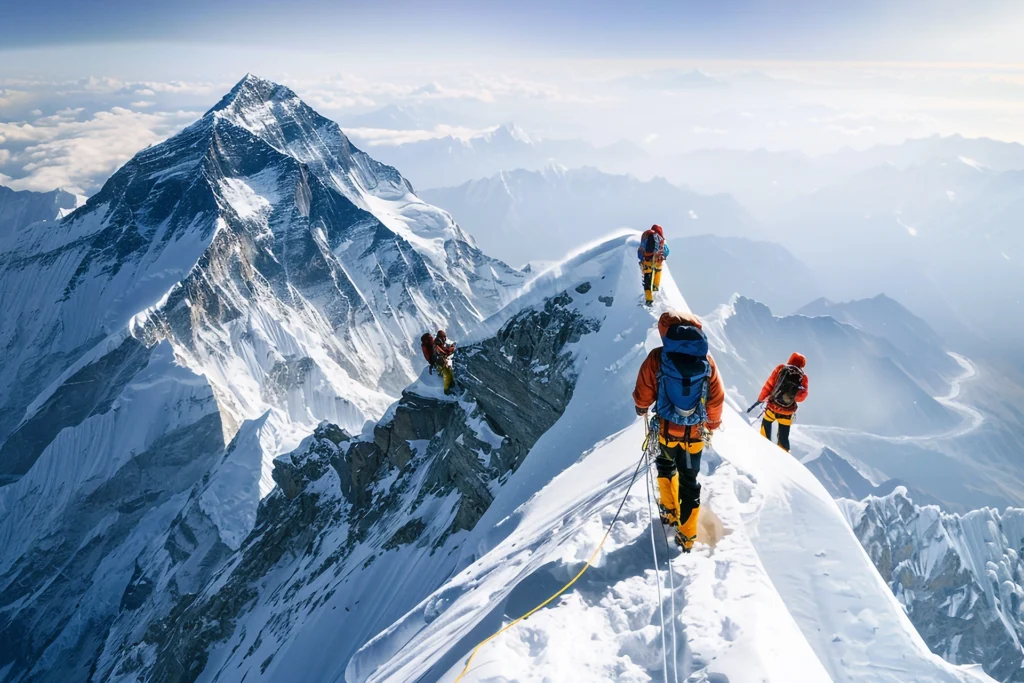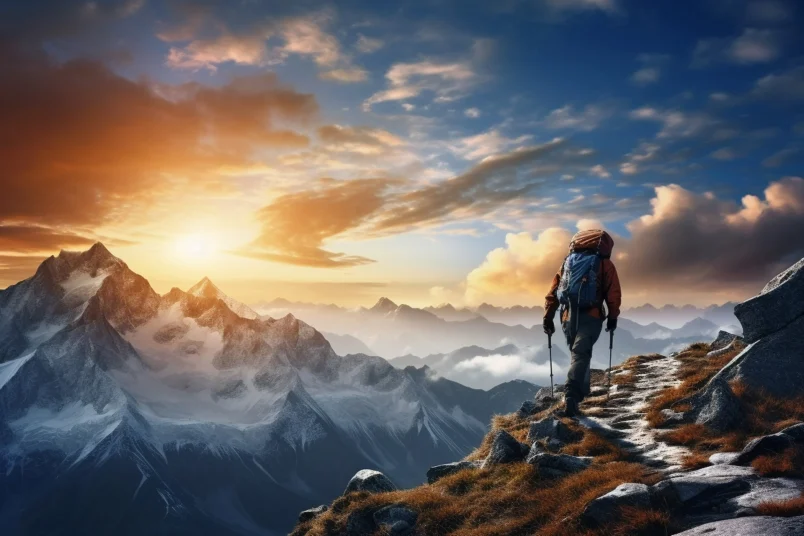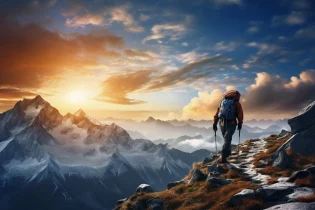Are you a mountaineering enthusiast? Thinking about conquering Everest alone? Think again. Nepal has just announced a ban on solo expeditions for all 8,000-meter peaks, including Himalayan Everest, the highest mountain in the world (8,849 meters), reports the Nepal Gazette, the official government publication.
What Does This Mean for You?
The decision, meant to improve safety and reduce rescue operations, has caught many climbers off guard—especially ambitious soloists. So, if you were planning a solo climb, those plans are going to have to change. According to the new regulations, every two climbers need to be accompanied by at least one altitude worker or mountain guide for any mountain above 8,000 meters. For other mountains, the rule requires at least one guide per group.
“The solo climbing era on these peaks has ended, regardless of a climber’s experience. Whether alpine-style or expedition-style, from now on, no one can climb these mountains without a support guide,” The Kathmandu Post quotes Narayan Prasad Regmi, director general of the Department of Tourism, the government agency responsible for issuing climbing permits.
According to Tourism Minister Hir Bahadur Gurung, these new rules are likely to be implemented in Spring 2025, writes the online platform What the Nepal.
But that’s not all! There’s also been a hike in the royalty fees for foreign climbers attempting to summit Everest via the standard south route in the spring. It’s going up to $15,000 per person. Rakesh Gurung, director of the mountaineering section of the Tourism Department, mentioned that this change is happening after 10 years, with the last change occurring on January 1, 2015.

Climbers ascending the snowy peaks of mount Everest, Nepal. Photo by Blockbits (Vecteezy).
How Much Will It Cost Now?
The new pricing applies to both Everest and other 8,000-meter peaks. Here’s a breakdown of the updated fees:
Everest
- Spring (March-May): $15,000 (was $11,000)
- Autumn (September-November): $7,500 (was $5,500)
- Winter (December-February) & Monsoon season (June-August): $3,750 (was $2,750)
Other 8,000-Meter Peaks
- Spring: $3,000 (was $1,800)
- Autumn: $1,500 (was $900)
- Winter & Monsoon season: $750 (was $450)
For Nepali Climbers
- Spring (standard Everest route): 150,000 NPR (was 75,000 NPR)
The new rates will take effect on September 1, 2025.
What Other Rules Are Changing?
Along with the ban on solo ascents and the permit fee increase, Nepal has introduced several other key regulations for Everest climbers:
- Mandatory death repatriation insurance: Every climber must now have insurance covering at least NPR 5 million ($37,593) for body repatriation. This insurance must be purchased in Nepal, and expedition agencies will be responsible for returning bodies.
- Tracking devices required: All climbers must carry tracking devices during their ascent. These devices will improve safety by allowing expedition teams and rescuers to monitor locations in real time, assisting in emergencies.
- Limited base camp access: Family members of climbers, guides, and high-altitude workers are banned from staying at base camp. Exceptions can be made with prior approval from the tourism department, allowing a maximum stay of two days.
- Stronger environmental measures: To combat increasing pollution, climbers are now required to bring all their waste—including human waste—back to base camp. Biodegradable bags must be used for waste collection in the upper regions to ensure proper disposal.
As Everest sees more visitors each year, these measures aim to improve safety, preserve the environment, and regulate the growing number of expeditions.
Why the Ban and Price Hike?
Nepalese authorities cite these main reasons:
- Safety concerns: Solo expeditions are significantly riskier, with a higher likelihood of accidents and fatal outcomes.
- Better regulation & rescue preparedness: Managing overcrowding and ensuring climbers have adequate support is a priority.
- Environmental protection: More funds will go toward maintaining Everest’s fragile ecosystem.
How Will This Affect Climbers?
For adventure-seekers dreaming of a solo conquest, this is a major shift. Some will certainly criticize the new requirements, but the move makes Everest a more structured and expensive endeavor, ensuring climbers are better supported while also limiting the independence that some value most. While the ban may help prevent tragedies, it’s a tough pill to swallow for purists who see solo climbing as the ultimate test of skill and endurance.
Love it or hate it, these new rules will shape the future of Everest expeditions. If you were planning a solo mission, it’s time to rethink your strategy—or find a solid climbing team.
And one last thing—nearly 8,900 people have summited the world’s highest peak from Nepal’s side since 1953. We’re sure that some of our readers will add to this impressive record of achievements. Wishing you successful and safe climbs on Everest!










